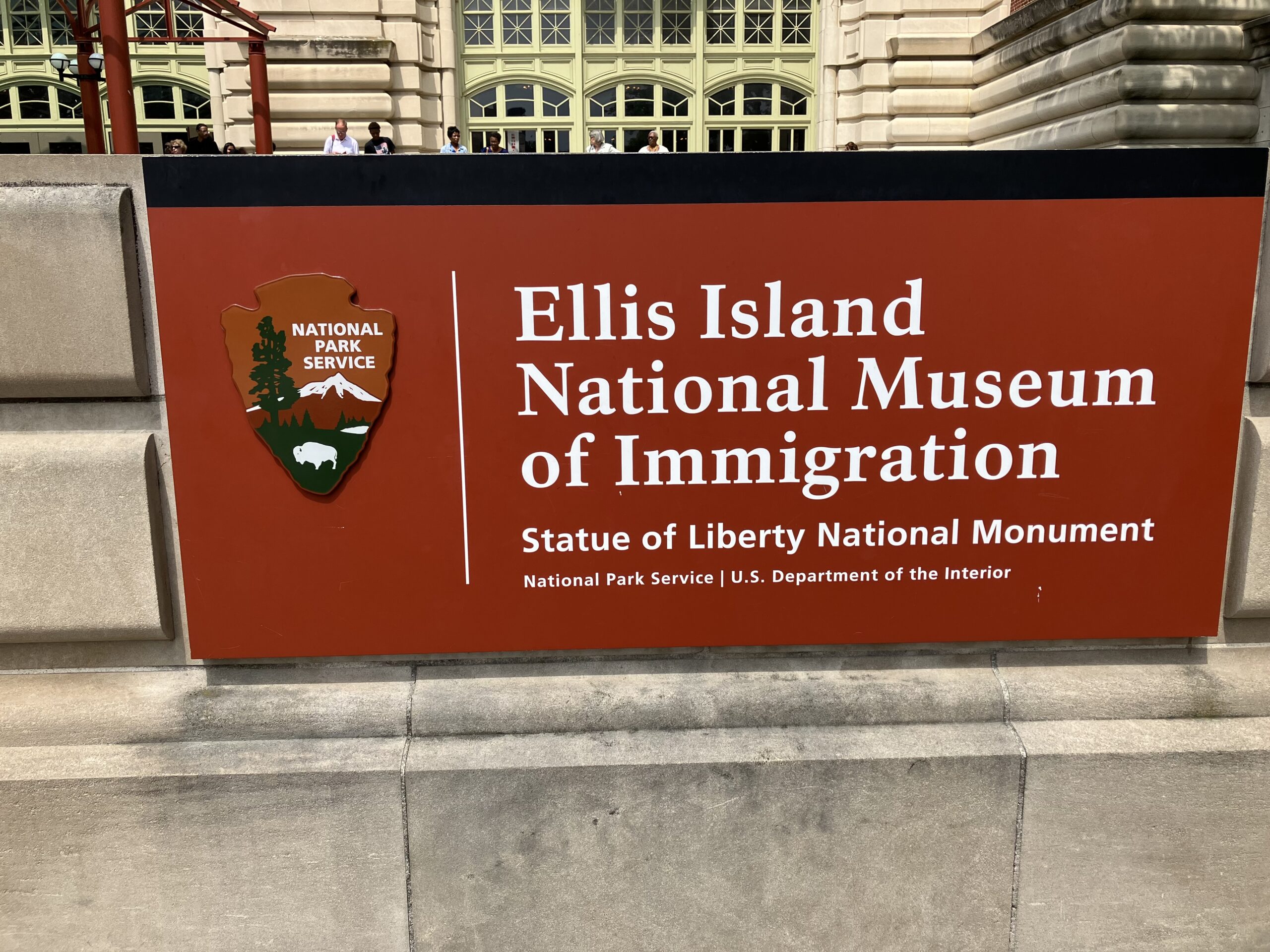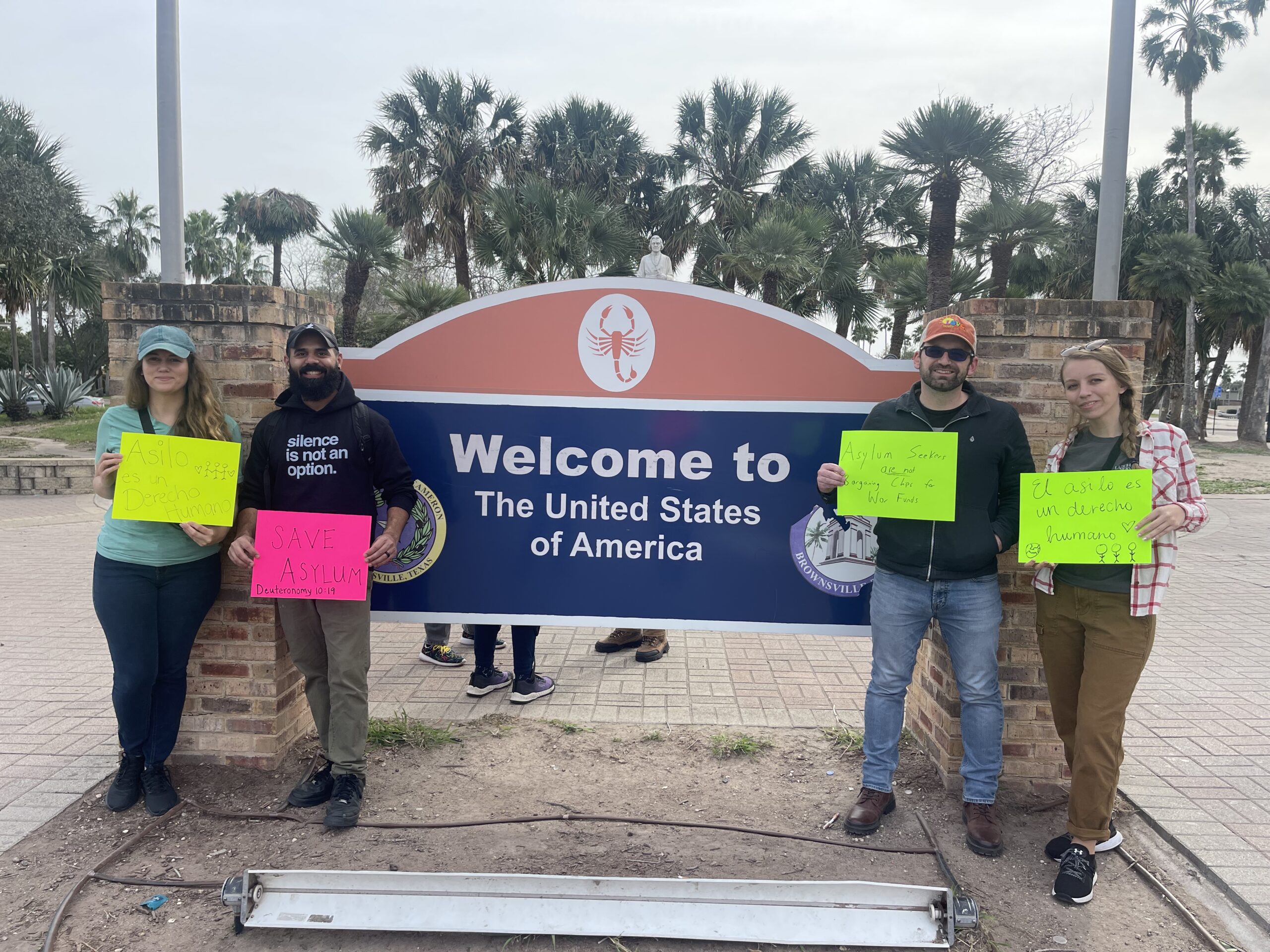 Last summer, as I stood on a ferry deck cutting around the Hudson River, I saw the Statue of Liberty and Ellis Island come into view—symbols of hope, refuge and opportunity for newcomer families arriving in the United States. This experience marked the beginning of a trip that I took to New York City as part of the Monitoring & Evaluation team in the CWS Home Study & Post-Release Services (HSPRS) program for unaccompanied children. I had chosen an early flight that morning, eager to see these historic monuments and gain a small glimpse into the experience of millions of migrants as they first stepped foot into our nation in the late 19th and early 20th centuries.
Last summer, as I stood on a ferry deck cutting around the Hudson River, I saw the Statue of Liberty and Ellis Island come into view—symbols of hope, refuge and opportunity for newcomer families arriving in the United States. This experience marked the beginning of a trip that I took to New York City as part of the Monitoring & Evaluation team in the CWS Home Study & Post-Release Services (HSPRS) program for unaccompanied children. I had chosen an early flight that morning, eager to see these historic monuments and gain a small glimpse into the experience of millions of migrants as they first stepped foot into our nation in the late 19th and early 20th centuries.
As I entered the overpowering halls of the Ellis Island National Immigration Museum, I thought of those who had made a challenging weeks-long journey across the Atlantic to reach the shores of a country that represented their dreams for a better life. Like current migrant arrivals, travelers came for various reasons, including family reunification, poverty, war and religious persecution. In its early days, Ellis Island served as a processing station for those who traveled on the lowest levels of steamships. They could pay the least amount to board but often had to stay in crowded, uncomfortable conditions throughout their journey. Once processed through a series of medical and legal exams, the majority were permitted to enter and rarely had to stay overnight. Reports indicate that the island processed over 12 million immigrants and approximately 40% of Americans have an ancestral connection to at least one of them. Intricately woven into the fibers of our DNA, it is an integral part of our public identity and a reflection of our national values of community, generosity and compassion for the struggling sojourner.
 Walking through the center, I was filled with curiosity and renewed hope for the work of those seeking to welcome new arrivals. A deep sense of purpose and connectedness overcame me as I noticed the strong traces of support from immigrant aid societies and community allies recognized throughout the museum displays. The realization that organizations like Church World Service are a modern-day extension of this support was a reminder of our society’s commitment to welcoming the stranger throughout history.
Walking through the center, I was filled with curiosity and renewed hope for the work of those seeking to welcome new arrivals. A deep sense of purpose and connectedness overcame me as I noticed the strong traces of support from immigrant aid societies and community allies recognized throughout the museum displays. The realization that organizations like Church World Service are a modern-day extension of this support was a reminder of our society’s commitment to welcoming the stranger throughout history.
In contrast, recent visits to *Stewart Detention Center in Lumpkin, Georgia and two points of entry at the U.S.-Mexico border (Reynosa and Matamoros, Mexico) painted a more disturbing picture of the current realities and challenges of immigration processing. Walking over the bridge to the Mexican side of the border, I was in disbelief at the sheer number of individuals waiting to have their asylum appointments. Dozens of people were sitting in line against a concrete wall to ensure that they held their place and hundreds were living in tents in informal camps with little access to services. While touring the Rio Grande by boat, I noticed deflated rafts along the riverbanks and was eerily reminded of images of migrant deaths that have appeared in news reports over the last several years.
 Visiting the detention center, I experienced another troubling side of U.S. immigration enforcement. The six-hour drive set an uneasy tone for the trip: dark, winding roads through isolated parts of rural areas. My sense of unease melted as I arrived at the organization’s volunteer house that night but resurfaced at different times throughout the weekend as I entered and left the facility. Set up as a medium-security prison situated inside multiple layers of security and immensely high barbed-wire fences, Stewart Detention Center requires that visitors enter without their belongings where they are in the hands of immigration officials. An unwelcoming environment for families, the center uses check-in paperwork that requests immigration status. As detainees are forced to reside deep inside the interiors of these checkpoints, they sometimes live out extremely long detentions with no end in sight, some reporting being there for up to 18 months. Though many are unaware of exactly when they will have their hearings, an immigration courtroom sits on site to determine final fates. According to a local source, nearly 80% of cases heard result in deportation. Others report maggots in their food, lack of proper access to mental health services, and being required to wear color-coded jumpsuits to group them by the severity of their alleged offense. These hostile conditions are not only a jarring reminder of a continued need for advocacy within the U.S. prison system in general but also a clear indication of the value that our current approach to immigration processing is placing on migrants.
Visiting the detention center, I experienced another troubling side of U.S. immigration enforcement. The six-hour drive set an uneasy tone for the trip: dark, winding roads through isolated parts of rural areas. My sense of unease melted as I arrived at the organization’s volunteer house that night but resurfaced at different times throughout the weekend as I entered and left the facility. Set up as a medium-security prison situated inside multiple layers of security and immensely high barbed-wire fences, Stewart Detention Center requires that visitors enter without their belongings where they are in the hands of immigration officials. An unwelcoming environment for families, the center uses check-in paperwork that requests immigration status. As detainees are forced to reside deep inside the interiors of these checkpoints, they sometimes live out extremely long detentions with no end in sight, some reporting being there for up to 18 months. Though many are unaware of exactly when they will have their hearings, an immigration courtroom sits on site to determine final fates. According to a local source, nearly 80% of cases heard result in deportation. Others report maggots in their food, lack of proper access to mental health services, and being required to wear color-coded jumpsuits to group them by the severity of their alleged offense. These hostile conditions are not only a jarring reminder of a continued need for advocacy within the U.S. prison system in general but also a clear indication of the value that our current approach to immigration processing is placing on migrants.
Although it is difficult to describe the complexity and weight of these experiences, they portray a clear decline in our country’s representation as a land of hope and inspiration. The days of quick processing and warm welcomes on Ellis Island no longer exist and immigration continues to be a tense topic during this election cycle as many newly arrived migrants have been unfairly vilified in the media. In times of heightened political tension, I propose that we focus our attention instead on the intended message of Lady Liberty—the Mother of Exiles—and restore the legacy of welcome on which our country stands.
*Note: the detention centers mentioned in this blog are adult detention centers and are not funded by ORR.
Julia Poppell is CWS’ Senior Officer for Client Services in the Home Study & Post-Release Services for unaccompanied children in Children’s Services. Learn how you can participate in your community and advocate for meaningful change here.
